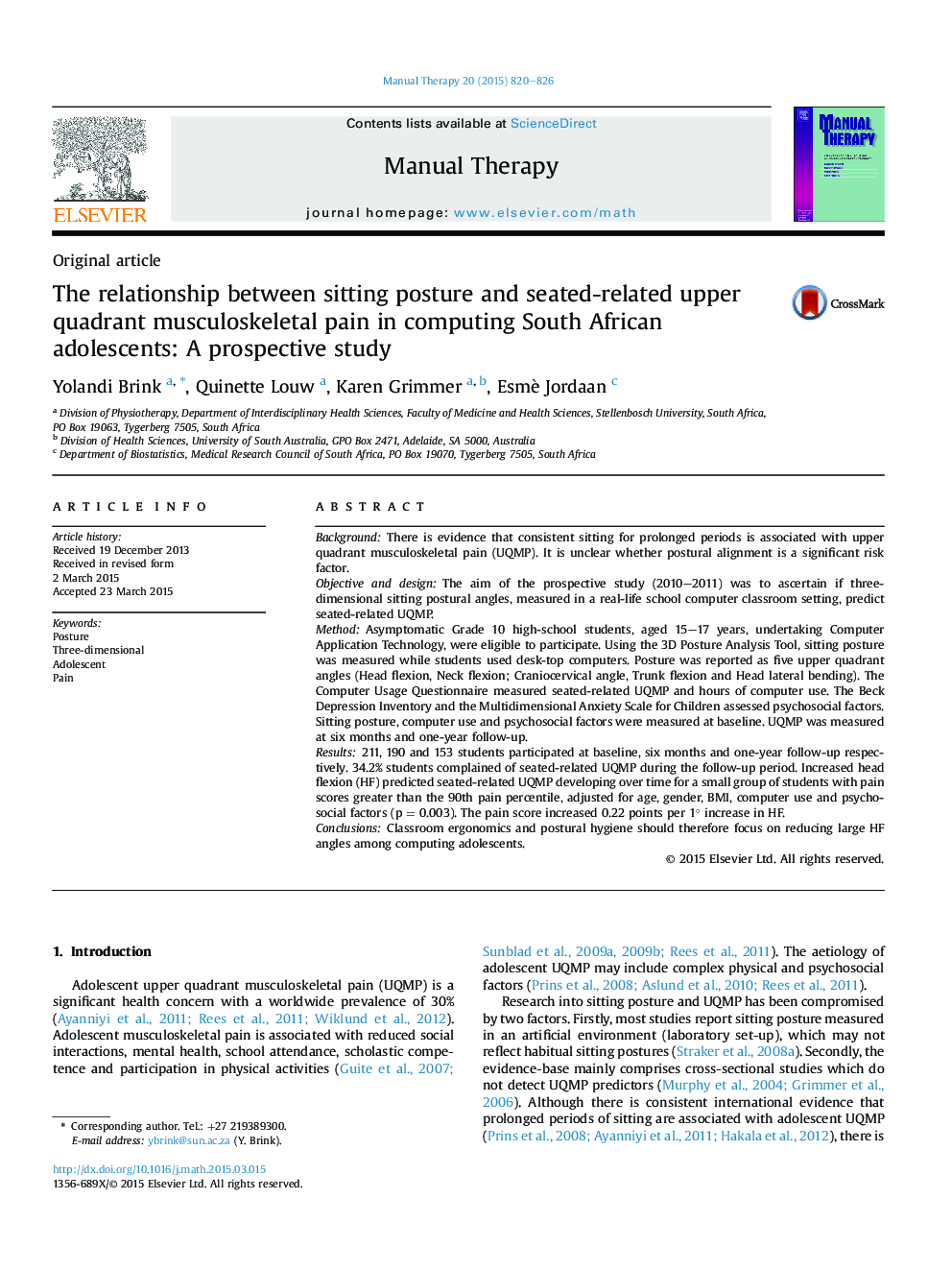| کد مقاله | کد نشریه | سال انتشار | مقاله انگلیسی | نسخه تمام متن |
|---|---|---|---|---|
| 2624758 | 1563098 | 2015 | 7 صفحه PDF | دانلود رایگان |
• Investigated sitting posture and musculoskeletal pain in computing adolescents.
• 34.2% of previously asymptomatic students developed musculoskeletal pain.
• Increased head flexion was predictive of seated-related musculoskeletal pain.
• Pain score increased 0.22 points with every 1° increase in head flexion.
• Findings applicable to small group of students with pain scores greater than 4.5.
BackgroundThere is evidence that consistent sitting for prolonged periods is associated with upper quadrant musculoskeletal pain (UQMP). It is unclear whether postural alignment is a significant risk factor.Objective and designThe aim of the prospective study (2010–2011) was to ascertain if three-dimensional sitting postural angles, measured in a real-life school computer classroom setting, predict seated-related UQMP.MethodAsymptomatic Grade 10 high-school students, aged 15–17 years, undertaking Computer Application Technology, were eligible to participate. Using the 3D Posture Analysis Tool, sitting posture was measured while students used desk-top computers. Posture was reported as five upper quadrant angles (Head flexion, Neck flexion; Craniocervical angle, Trunk flexion and Head lateral bending). The Computer Usage Questionnaire measured seated-related UQMP and hours of computer use. The Beck Depression Inventory and the Multidimensional Anxiety Scale for Children assessed psychosocial factors. Sitting posture, computer use and psychosocial factors were measured at baseline. UQMP was measured at six months and one-year follow-up.Results211, 190 and 153 students participated at baseline, six months and one-year follow-up respectively. 34.2% students complained of seated-related UQMP during the follow-up period. Increased head flexion (HF) predicted seated-related UQMP developing over time for a small group of students with pain scores greater than the 90th pain percentile, adjusted for age, gender, BMI, computer use and psychosocial factors (p = 0.003). The pain score increased 0.22 points per 1° increase in HF.ConclusionsClassroom ergonomics and postural hygiene should therefore focus on reducing large HF angles among computing adolescents.
Journal: Manual Therapy - Volume 20, Issue 6, December 2015, Pages 820–826
